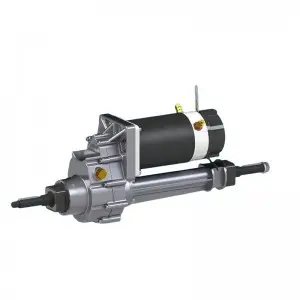The transaxle is a critical component of a vehicle’s drivetrain, responsible for transmitting power from the engine to the wheels. It combines the functions of transmission, axle and differential into one integrated unit. The front transaxle breather hose plays a vital role in maintaining the normal operation of the transaxle. It is designed to allow the transaxle to breathe and prevent pressure from building up inside the unit. In this article, we’ll explore the importance of keeping your front transaxle breather hose dry and the potential consequences of neglecting this important maintenance task.
The front transaxle breather hose is usually located on the top of the transaxle housing and connects to the breather hole. Its main function is to allow air to flow in and out during heating and cooling of the transaxle during operation. This helps prevent pressure from building up inside the transaxle, which can lead to leaks, damaged seals and other problems. In addition, the breather hose prevents water, dust, and other contaminants from entering the transaxle, which can cause corrosion and premature wear of internal components.
One of the most important reasons why the front transaxle breather hose should be kept dry is to prevent water from entering the transaxle. If the breather hose is clogged or damaged, water can enter the transaxle, causing a number of potential problems. Water contamination can cause the lubricant within the transaxle to emulsify, reducing its effectiveness and possibly causing damage to internal components. Additionally, water can cause corrosion of gears, bearings, and other critical components, ultimately leading to premature transaxle failure.
Additionally, a wet breather hose can allow dust, debris, and other contaminants to enter the transaxle. This causes accelerated wear of the gears and bearings, resulting in increased friction and heat within the transaxle. Over time, this can lead to reduced efficiency, increased fuel consumption and possible transaxle overheating. In severe cases, the buildup of contaminants can cause complete transaxle failure, requiring expensive repairs or replacements.
To ensure that the front transaxle breather hose remains dry and free of contaminants, regular inspection and maintenance are essential. It is important to inspect the breathing hose for any signs of damage, such as cracks, tears, or deterioration. Additionally, the vent should be inspected to make sure it is clear of obstructions and functioning properly. Any issues with the breather hose or vent should be addressed immediately to prevent potential damage to the transaxle.
In addition to regular inspections, it’s important to keep the area around your breather hose clean and free of debris. This helps prevent dust and other contaminants from entering the transaxle. If your vehicle frequently operates in dusty or muddy conditions, your breather hose and vents may need to be cleaned more frequently to prevent contaminants from building up.
In conclusion, the front transaxle breather hose plays a vital role in maintaining the normal operation of the transaxle. Keeping the breather hose dry and free of contaminants is critical to preventing potential damage to the transaxle and ensuring its long-term reliability. It is necessary to regularly inspect and maintain breathing hoses and vents so that any problems can be detected and resolved promptly. By taking these proactive steps, vehicle owners can help maintain the integrity of the transaxle and avoid costly repairs in the future.
Post time: Jun-19-2024


